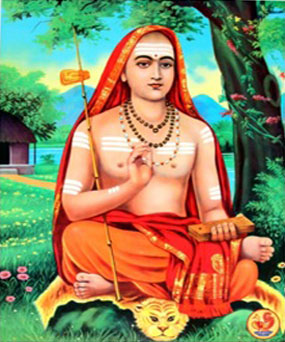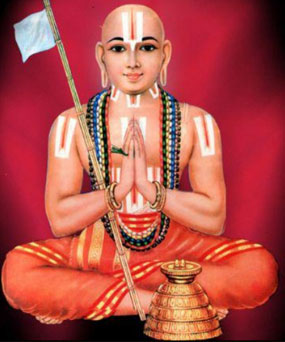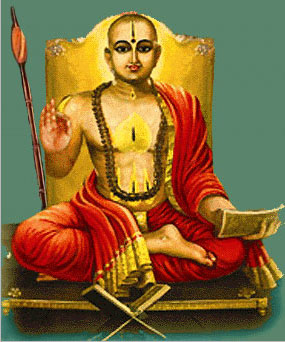THE PHILOSOPHY∗∗∗∗∗∗∗ THE VEDAS AND THE UPANISHADS∗∗∗∗∗∗∗ Shankara Agraharam:
Most of our understanding of the Aryan period and the foundation of Hinduism is derived from the collection of evocative Sanskrit hymns, the four Vedas. The mystical section of the Vedas comprises Brahmans, Aranyakas, and the Upanishads.
The Vedas, it is believed, emanated from Brahma's breath and were revealed orally to the munis, or sages. Rich in lyricism, rhythm, and eloquence, the Vedas are infused with instructions and ritual observations.
The later Vedic Age, which began sometime after 1000 BC, produced the Brahmans, or instructions for ritual and prayer, which placed every facet of Aryan life under control of the priests.
Shankara Agrahara the philosophy has drawn from 3 Saints Sri Adi Shankara, Sri Ramanuja, and Sri Madhvacharya. The Vedic Village is built on principles & practices of great Saints.
 Sri Adi Shankaracharya (CE 788 - 820Shri Adi Shankaracharya or the first Shankara with his remarkable reinterpretations of Hindu scriptures, especially on Upanishads or Vedanta, had a profound influence on the growth of Hinduism at a time when chaos, superstition and bigotry was rampant. Read more |
 Ramanuja (1017 - 1137 CE)On traditional accounts, Ramanuja lived the unusually long life of 120 years (twice the average lifespan at the time), from 1017 to 1137 AD, though recent scholarship places his life between 1077 to 1157 AD, with a life of 80 years (Carman p.27). Read more |
 Madhvacharya (1238 - 1317)The Dvaita or "dualist" school of Hindu Vedanta philosophy originated in 13th-century South India with Sri Madhvacarya (Madhva). Madhva, who considered himself an avatara of the wind-god Vayu, argued that a body of canonical... Read more |





